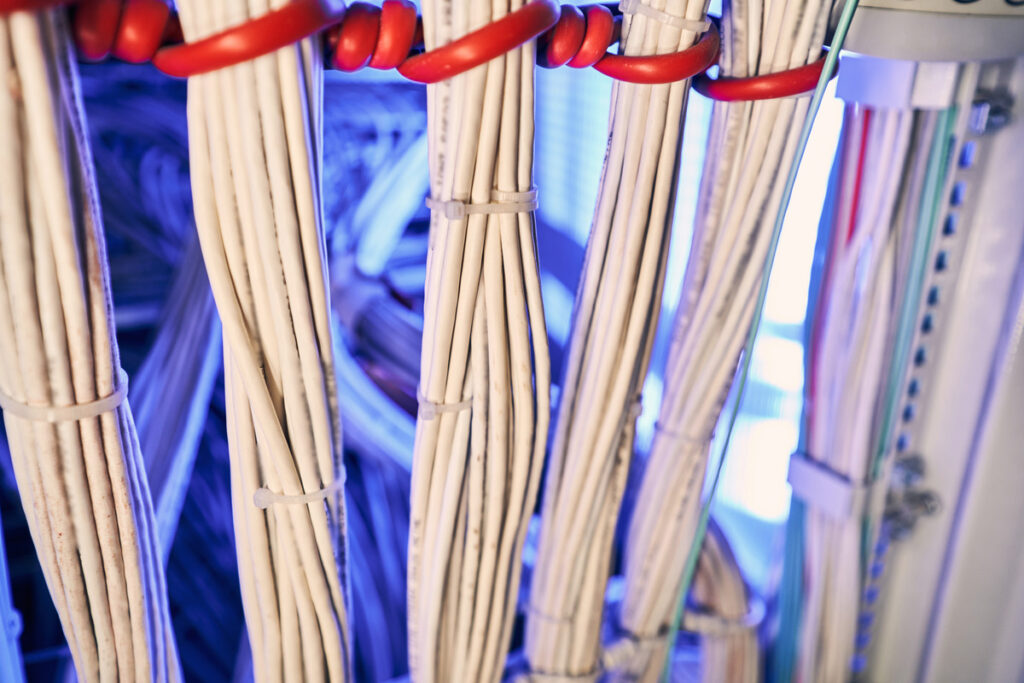When you first moved into this new office, things were running great—the five of you working had your own computers that you plugged in, and the network was smooth. Then came the phone lines and the security system, and now you’re hiring like crazy. Now you’re tripping over wires, and the internet takes about five business days to do anything you need.
Now, you’re looking into structured cabling installation. You’ve heard the word around and want to ensure it’s a good idea before investing in it. You also want to find someone you can trust to install the cabling. Poor installation can lead to costly repairs, downtime, and reduced network performance.
Exploring the basics of structured cabling systems and avoiding common mistakes during installation is a good place to start.
The Benefits of Structured Cabling
Structured cabling helps organize all the cables and systems in your office to follow proper standards. The ANSI/TIA-568 Standards in the United States ensure your system works well with other devices, stays compatible with older systems, and maintains reliable performance levels. Some of the benefits of structured cabling include:
- Scalability: Incorporate new technologies and grow your business without needing a complete overhaul.
- Improved Network Performance: Reduces signal interference and downtime, keeping data transmission fast and reliable.
- Simplified Maintenance: Organized cabling makes it easier to identify and resolve issues quickly.
- Cost-Effective: Reduces maintenance costs and the risk of network failures, saving your business more money over time.
5 Structured Cabling Installation Challenges and How to Overcome Them
Mistake 1: Poor Planning and Design
Your life is busy, both in and outside of work. It might be tempting to rush in and make things happen fast. However, your structured cabling installation could lead to inefficient layouts and future limitations without proper planning and design.
Conducting a thorough site survey will help you determine the right design for your business. This will allow you to accommodate your current needs and prepare for future growth and scalability. Plus, working with an experienced professional can take the guesswork out of structured cabling.
Mistake 2: Using Low-Quality Cables and Components
Reducing costs will always be an essential part of running a business. However, you should never try to cut costs on your cables. Structured cabling systems are an investment that needs to hold up in the long term. Using subpar materials can lead to a shorter lifespan and performance issues for your network.
Always make sure you are investing in high-quality, industry-compliant cables and components. When choosing cabling, Cat6 or Cat6A will be less expensive but a little slower, while Cat8 will be faster but sport a higher price tag.
Mistake 3: Ignoring Cable Management
The whole point of installing a structured cable system is to keep things organized and running smoothly. If you’re left with disorganized cables, you risk unexpected downtime during repairs, and safety issues increase.
During installation, ensure your cable systems are structured, your cables get labeled, and proper routing is implemented. This will make things much easier when there’s a technical problem or you add new technology to your network.
Mistake 4: Not Adhering to Standards and Compliance
Industry standards are different than legal codes. While the ANSI/TIA-568 is a voluntary standard, it’s meant to help things run as well as possible. Not adhering to legal codes like the National Electric Code (NEC) can result in fines, legal action, or certification denial.
When you begin your structured cabling installation, ensure they follow recognized codes and standards. Hiring certified cabling professionals can give you peace of mind and guidance as they perform the installation.
Mistake 5: Skipping Testing and Certification
Once your structured cabling is installed, it’s time to test. You want to ensure everything is working properly so you don’t run into undetected issues down the line.
Sometimes, your contract will include certification, but it should always include testing. Certification isn’t required, but it can leave you and your installer confident in the installation. That way, if future issues arise, you’ll know it isn’t an installation issue.
Nail Your Structured Cabling With Simple Systems
Finding a certified provider for your structured cabling installation doesn’t have to take long. Simple Systems can provide expertise, transparency, and confident installation to help you organize your cabling and prepare for future growth.
Contact our team today to learn more about how our structured cabling services can benefit your business.


